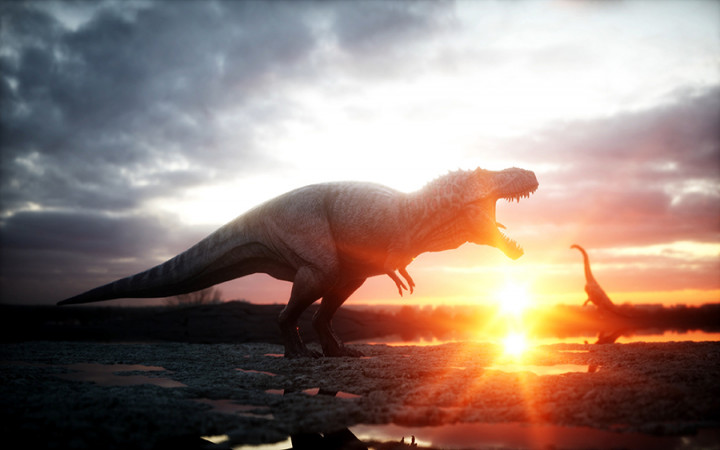Today’s Wonder of the Day was inspired by Adela from Hamilton. Adela Wonders, “Why did dinosaurs become extinct?” Thanks for WONDERing with us, Adela!
Have you ever seen the movie Jurassic Park? Wouldn't it be cool if you could visit a theme park to see real dinosaurs today? Better yet, how awesome would it be if you could travel to certain areas of the world to see real dinosaurs still living in the wild?
Have you ever seen the movie "Jurassic Park”? Wouldn’t it be cool if you could visit a theme park to see real dinosaurs today? Better yet, how about seeing real dinosaurs in the wild?
We can’t do any of these things, of course. All the dinosaurs are gone. (Although some scientists think that modern birds evolved from dinosaurs. But that’s a topic for another Wonder of the Day!)
How long have the dinosaurs been gone? Experts say it’s been 65 about million years. This is based on fossils from around the world. These fossils show evidence of a mass extinction event. It wiped out about 75 percent of the species on Earth!
What could have caused such widespread destruction of life? That’s a question scientists have been try to answer for many years. Today, there are two main hypotheses that they believe might explain what happened.
The most popular theory is that Earth was hit by a giant asteroid, comet, or meteorite. Scientists have found some proof of this. They discovered a layer of the element Iridium, which is rare on Earth. But it’s plentiful in space! And the samples they’ve found date back about 65 million years. Did this layer of Iridium come from an object that hit Earth? Many think so.
The layer of Iridium is pretty good evidence of an impact from outer space. But for years, experts were unable to find the site where such an object had hit. Then, in 1991, they found the Chicxulub crater. This is a massive 110-mile wide crater that sits along the edge of Mexico’s Yucatán Peninsula. It stretches out into the Gulf of Mexico.
To form such a crater, scientists believe the object must have been at least six miles wide. It would have hit Earth at a speed of about 40,000 miles per hour. Such an impact would’ve had about two million times more energy than the most powerful nuclear bomb.
The heat from the impact would have scorched Earth’s surface. It would have started fires worldwide while. It would have even blocked out the Sun as debris filled the atmosphere. Tsunamis would have flooded large parts of the world. Shock waves could have caused massive earthquakes and volcanic eruptions.
Without light from the Sun, the Earth would have been very dark. This could have lasted for months and even years. It would have stopped the process of photosynthesis and plunged the Earth into a deep freeze. Eventually, greenhouse gases trapped in the atmosphere could’ve caused another wild swing in climate. This could have led to the mass extinction.
Of course, the asteroid theory isn’t the only one out there. Many people think volcanic eruptions caused the mass extinction event. This theory points to an increase in volcanic activity in what is now India. This could have led to effects similar to those of an impact.
Some scientists think both theories could be correct. In fact, they may have taken place at the same time. An asteroid impact could’ve also set off the volcanic activity. Together, they made the worldwide effects even worse.
Of course, it’s impossible to test such theories…and who would want to trigger another mass extinction anyway? Some scientists still hold other theories. Until there’s a clear answer, experts will continue trying to learn what exactly happened 65 million years ago!
Standards: CCRA.L.3, CCRA.L.6, CCRA.R.1, CCRA.R.2, CCRA.R.4, CCRA.R.10, CCRA.SL.1




